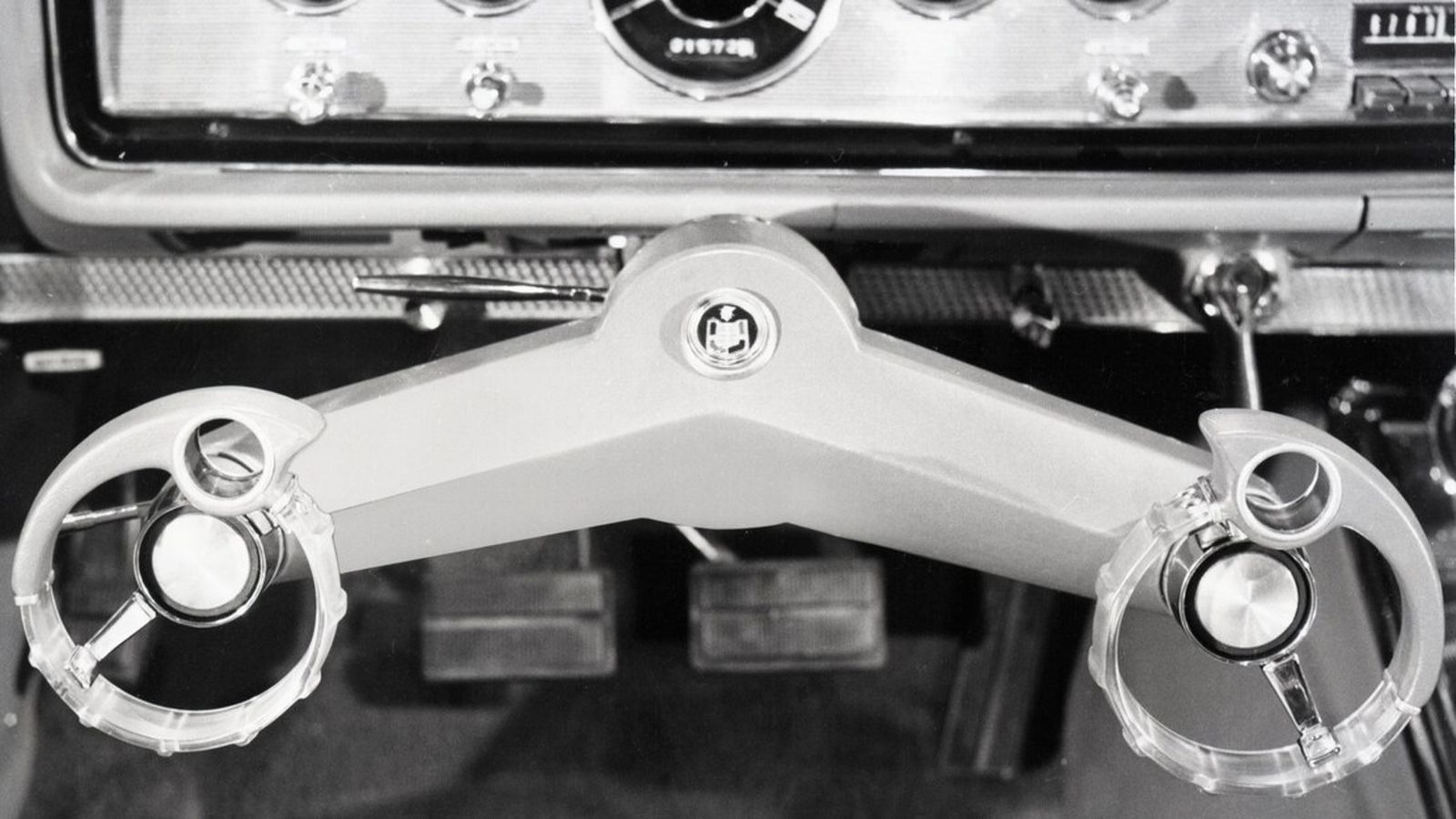
The car would change directions by turning the dials, which used roller chains attached to the central steering column to transmit commands. Both rings worked in unison, so the driver could use one or both to steer the vehicle. Rumpf designed the “Wrist-Twist” so the sprocket ratios could be adjusted to change the steering ratio, be tilted up and down like any regular wheel, and quickly swapped with a car’s existing steering controls.
It was a simple concept with some benefits. First, eliminating the “wheel” portion gave the driver a better view of the gauges on the instrument panel and provided a better line of sight down the road. Additionally, doing away with the hard “wheel” obstruction removed the hazard of hitting one’s head during an accident in a time before airbags.
One drawback was that power-assisted steering needed a hydraulic pump to work correctly. If that failed, you could still muscle a conventional steering wheel enough to pull over the vehicle. That wasn’t the case with the smaller dials on the “Wrist-Twist” system. There’s insufficient leverage to crank those rings and get the tires to turn. However, Rumpf tackled this problem by creating a secondary power system that kicked in if the engine stopped or the hydraulic pump failed, per MotorTrend.
Based on test drives performed in 1965, some 200 men and women said that most aspects of the Wrist-Twist system were “excellent” (via MotorTrend). At the time, Ford felt the system was a complete success, yet it never went into total production. A 1968 issue of Popular Mechanics included a blurb saying it was “still alive and kicking,” but after that … it vanished into oblivion. Rumpf, however accumulated 15 U.S. patents, primarily for vehicle safety (via MacsMotorCity).
Stay connected with us on social media platform for instant update click here to join our Twitter, & Facebook
We are now on Telegram. Click here to join our channel (@TechiUpdate) and stay updated with the latest Technology headlines.
For all the latest Automobiles News Click Here
